What is the Watermodel?
The central challenge of a project management system with resource planning lies in reliable capacity planning. The goal is to identify and highlight potential overloads. Not only project tasks but also other factors that reduce availability – such as training or vacation – must be taken into account.
Traditional systems are based on a simple principle borrowed from machine planning: the planned workload is summed for a specific time unit (e.g., day, week). If this sum exceeds the available capacity, an overload is indicated.
The problem with this method is its lack of precision: what appears to be an overload in a given week may prove to be uncritical when viewed over a longer period. The broader the time span, the fewer apparent conflicts arise – which, however, conceals actual problems and does not contribute to their resolution.
Moreover, precise day-by-day planning of human labor in projects is neither realistic nor practical. Project staff do not work like machines on an hourly basis but rather in a goal-oriented manner: they are given tasks with timeframes and effort estimates – for example, "by the end of next week" and "20–30 hours." Minute-by-minute scheduling is unrealistic and too burdensome for project managers.
How does Can Do solve this problem with the Watermodel?
Can Do’s dynamic matching method, known as the Watermodel, addresses these very challenges. Instead of relying on rigid time grids, it calculates workload based on how all work packages interact over time.
Example:
An employee is working on a concept over two weeks (50% workload) and attends a training course during the first week (100% workload).
➡ In traditional systems, this would appear as an overload in the first week.
➡ In the Watermodel, Can Do recognizes that the tasks are feasible within the timeframe, as the employee is flexible and can organize their time independently.

Only when no time-feasible combination of tasks is possible – for example, due to a training session being too long – does Can Do indicate a real risk (red warning light).

Uncertainties in planning (e.g., training lasts 2–3 days) are also taken into account by calculating a percentage-based risk indicating the likelihood of a resource conflict.
Advantages of the Watermodel method:
-
Realistic detection of actual overloads
-
Planning reflects the reality of project work
-
Supports flexible self-organization by employees
-
Reduced maintenance and planning effort
-
Takes uncertainties (e.g., vague durations) into account
-
Absences such as vacation or base load are easy to plan



